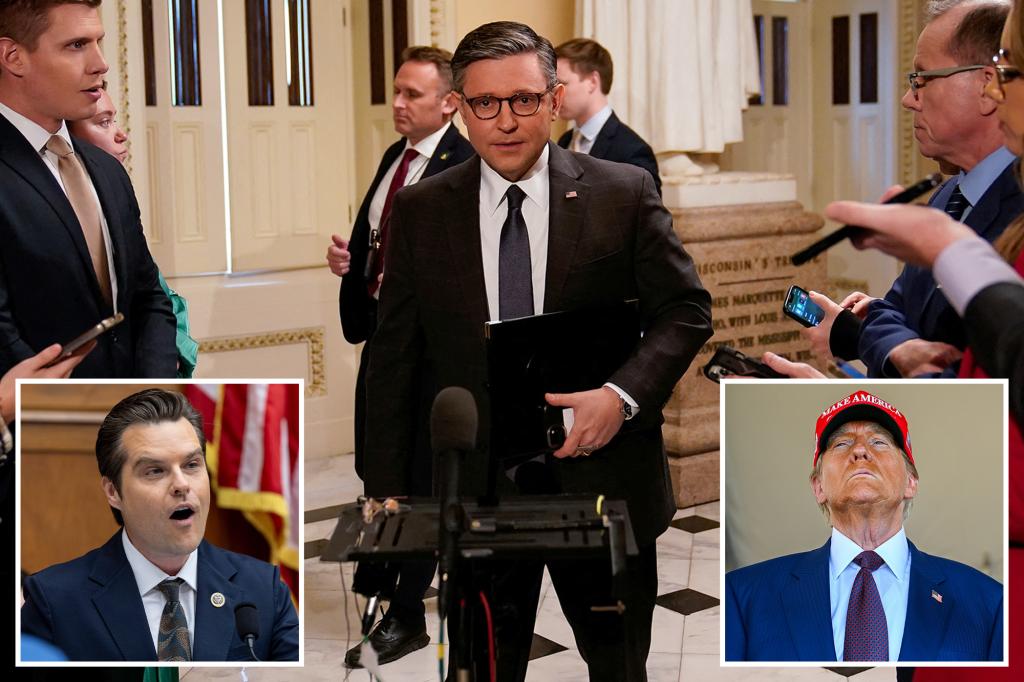In the aftermath of the 2024 elections, House Republicans managed to retain their slim majority, albeit reduced to a precarious 220-215 following the result of the California’s 13th District race, where Democrat Adam Gray defeated GOP Rep. John Duarte. This one-seat majority marks a notable reduction from the previous Congress, with at least three members expected to leave in January, leading House Speaker Mike Johnson to comment on the difficulties of maintaining a razor-thin majority through a combination of redistricting challenges and the political landscape. Despite these hurdles, Johnson exudes confidence, stating that Republicans know how to govern with a slim margin and commit to filling the upcoming vacancies quickly.
As House Republicans navigate this narrow majority, the potential for resignation by representatives like Elise Stefanik and Mike Waltz could shorten their control to an even slimmer 217-215, which would be the tightest grip on the House in over a century. With the looming transitions, many believe the Republican majority may not stabilize until April, forcing them to tackle their agendas with little to no flexibility. Critics within the Senate acknowledge the challenges this thin margin brings, particularly in achieving consensus and keeping the party unified, especially considering past conflicts that resulted in leadership upheavals, such as the ousting of former Speaker McCarthy.
Entering the next Congress, Republicans are also faced with significant unfinished business inherited from the outgoing assembly. Key unresolved issues include appropriations for government funding and pending disaster relief legislation, alongside the perennial challenges of budget negotiations. The Republican Party’s internal frustrations, highlighted by figures like Rep. Ralph Norman, point to a growing discontent regarding fiscal management and transparency. These budgetary concerns are compounded by impending fiscal deadlines, such as addressing the debt ceiling and the expiration of key tax cuts championed by Trump, indicating that the new Congress will be significantly occupied with high-stakes financial matters.
While strategizing ahead, Johnson has convened discussions with Senate Republicans to plot a legislative agenda that aligns with the objectives of President-elect Donald Trump. The Senate’s Republican majority of 53-47 will diminish due to further cabinet appointments, yet this upper chamber historically presents formidable hurdles due to the filibuster rule requiring a supermajority for many legislative actions. Johnson pointed to the plan proposed by incoming Senate Majority Leader John Thune, which outlines a two-part legislative strategy utilizing the reconciliation process to sidestep the filibuster for budget-related measures, suggesting a focused initial push on energy, defense, and border security in the early months of the new administration.
Republicans are aiming to make border security a central issue in their legislative agenda, along with deeper spending cuts, and intend to leverage their moment of governance to enact significant regulatory reforms. These initiatives, described as a need to “take a blowtorch to the regulatory state,” signal a broader intent to reorient federal priorities and encourage economic growth. Johnson’s remarks indicate a level of enthusiasm within the party, hinting at a collaborative effort to prioritize key policy points early in the administration but also revealing the collective anticipation of overcoming legislative hurdles.
As the GOP prepares to roll out its legislative priorities in January, the upcoming Congress will be a critical testing ground for the party’s unity and effectiveness in governance. With the absence of wiggle room in their slim majority, the stakes are high, and the pressure to deliver successful outcomes for their constituency will be immense. Observers will be closely monitoring how House Republicans manage their balance of power, navigate entrenched budgetary disputes, and maintain party cohesion while pushing forward with Trump’s policy goals, especially given the intricate nature of contemporary political dynamics.










